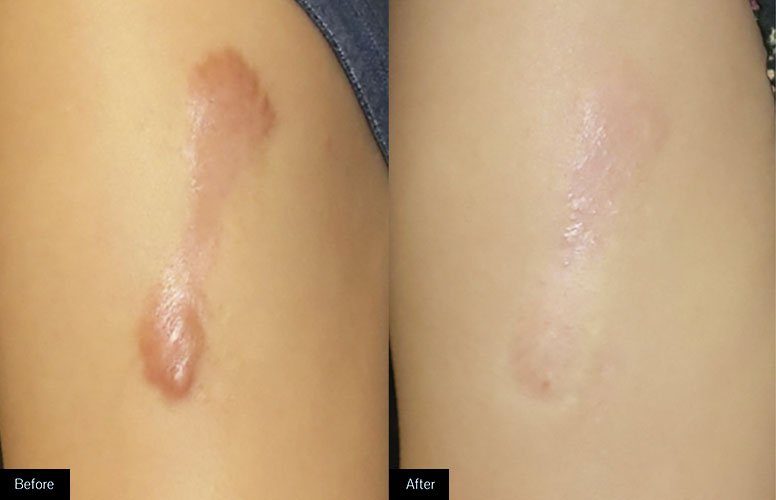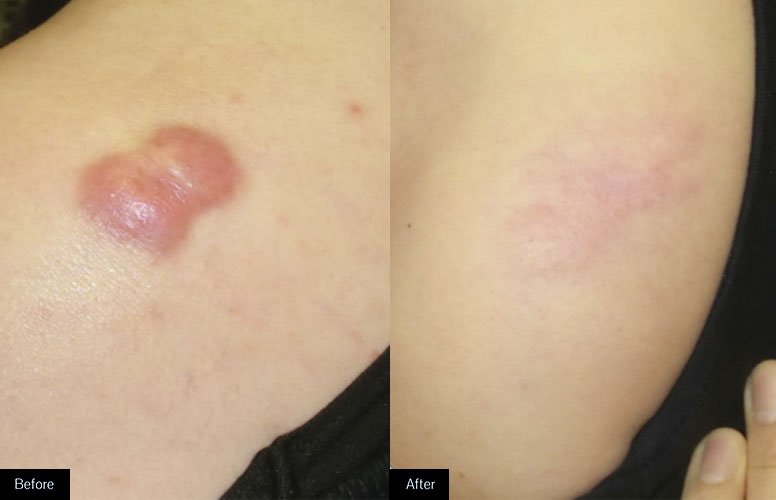
Keloid Treatment
What are keloids?
A keloid scar is a thick raised scar. It can occur wherever you have a skin injury but usually forms on earlobes, shoulders, cheeks or the chest. If you're prone to developing keloids, you might get them in more than one place.
A keloid scar isn't harmful to your physical health, but it can cause emotional distress. Prevention or early treatment is key to help flatten or remove it.


Treatment Options
-
If you have a keloid, we may reduce its thickness by injecting it with corticosteroid or other anti-inflammatory agents. You'll likely need monthly injections for up to six months before seeing the scar flatten.
-
For newer keloids, the first treatment option might be compression dressings made from silicone or other materials. The goal is to reduce or prevent a scar by putting pressure on the wound as it heals. Such dressings need to be worn for 12 to 24 hours a day for 4 to 6 months to be effective.
-
Laser therapies are medical treatments that use focused light. Unlike most light sources, light from a laser (which stands for light amplification by stimulated emission of radiation) is tuned to specific wavelengths. There are various lasers available to treat keloids. A pre-treatment consultation is recommended to determine which laser is right for you.
-
If your keloid hasn't responded to other therapies, your doctor might recommend removing it with surgery in combination with other methods.
